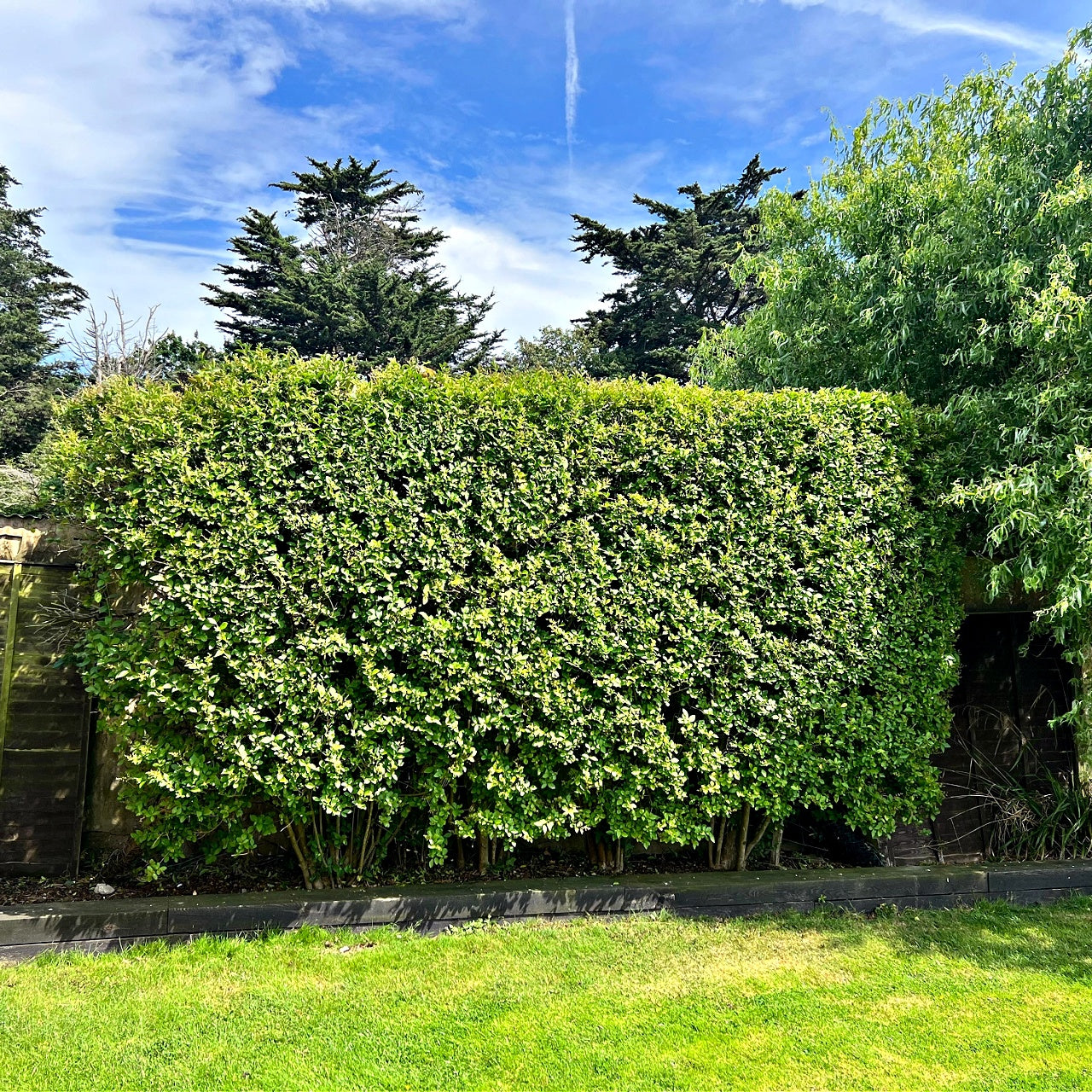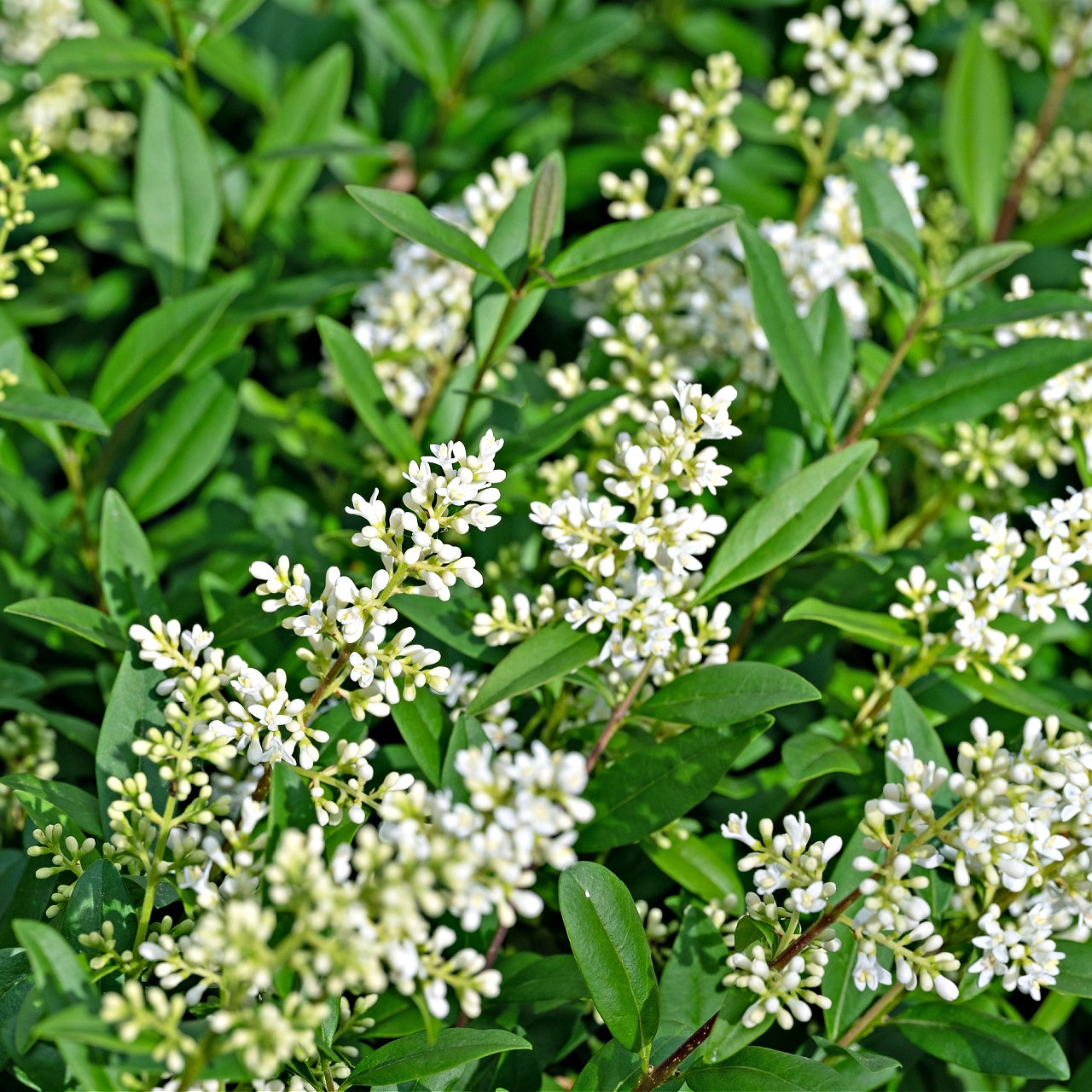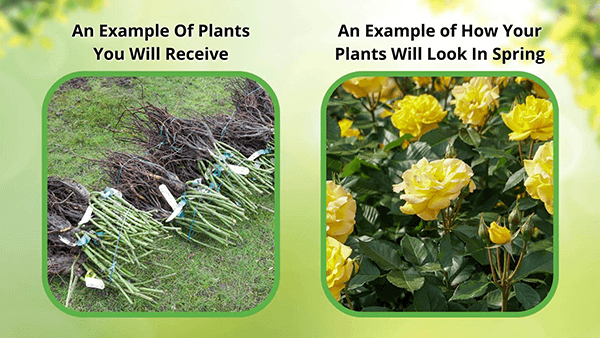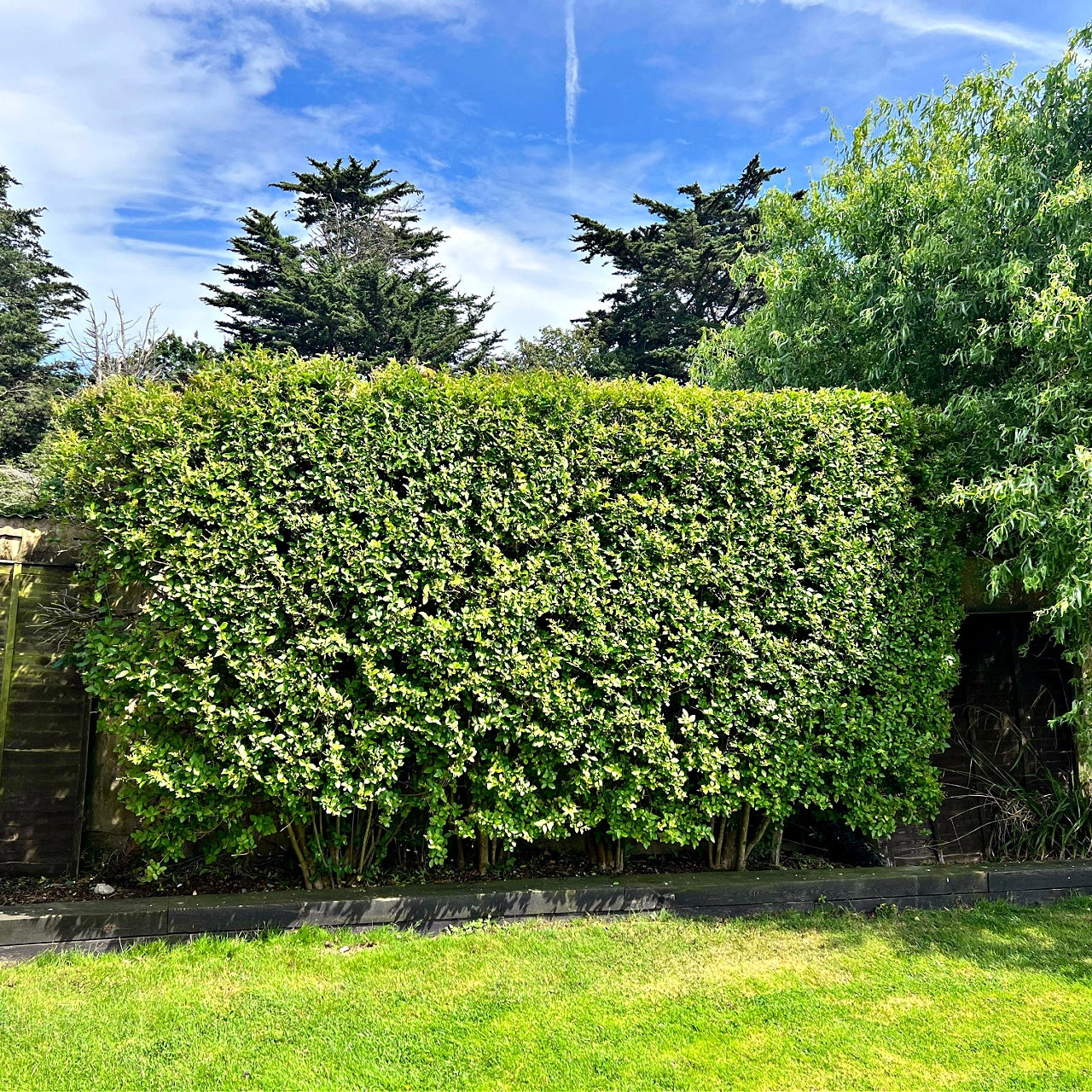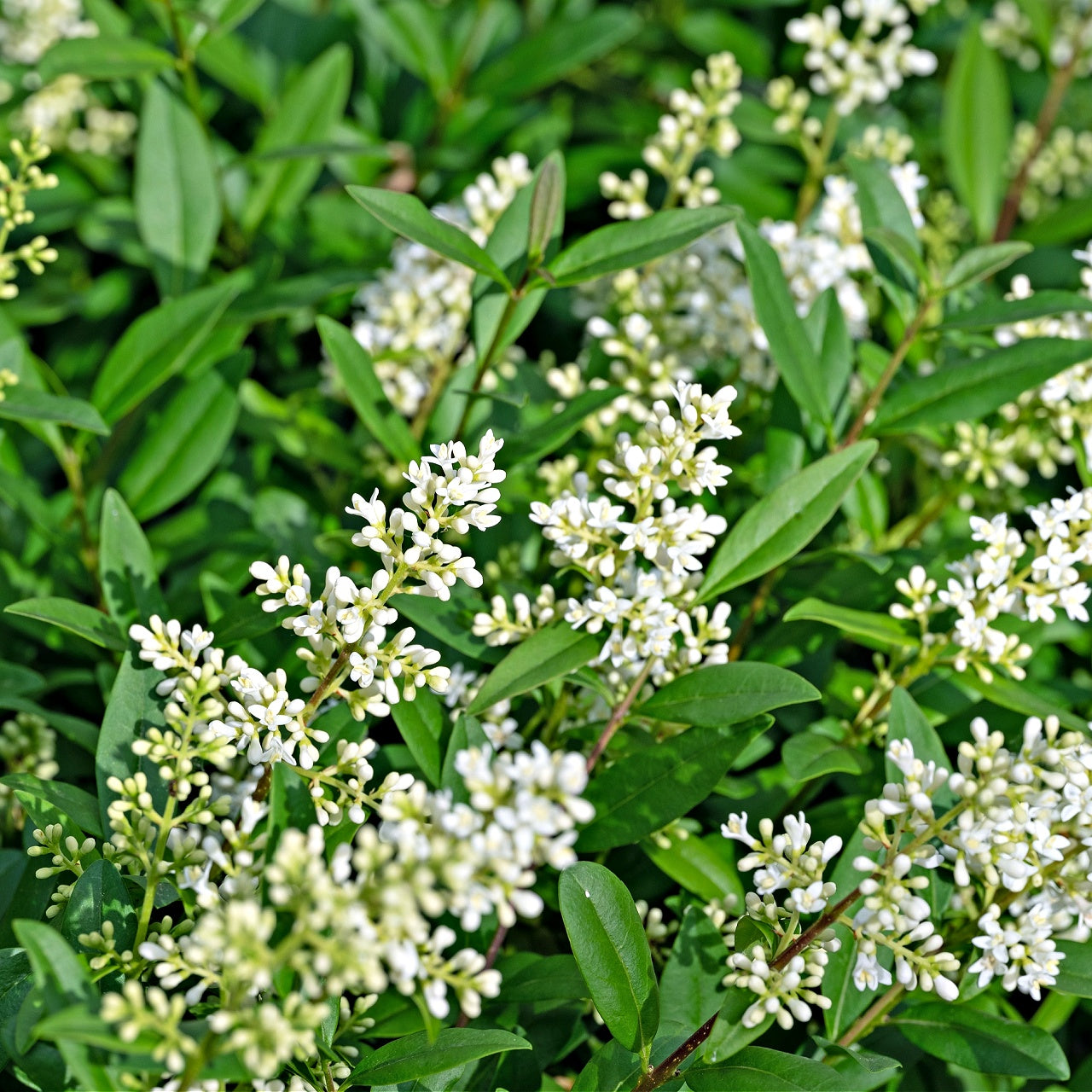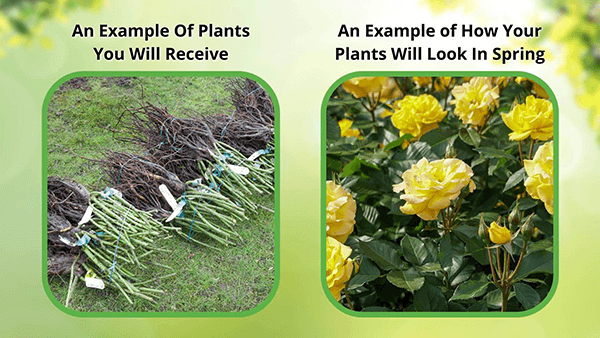Northern Privet Shrubs
Northern Privet Shrubs
This plant ships:
Ships Week of May 12thCouldn't load pickup availability
Exposure
Sun or ShadeHeight at Maturity
Under 10 FeetUsage
EvergreenShipped As
Bare-rootShips
Ships Week of May 12thPlanting Zones
4-9Northern Privet Shrubs
Northern Privet shrubs make excellent border plants and are an evergreen favorite. It began as a species native to Japan and is now commonly found in the U.S. It is winter hardy in U.S.D.A. zones five through eight. It can be a border around a yard, an accent piece near a home or building, or a plant that brings color to the yard during the summer. When mature, this bush can be 10 to 15 feet tall. Some gardeners let their bushes flourish naturally, whereas others may trim them occasionally during the growing season to get the desired shape.
Frequent trimming may result in seasons without flowers, which is ideal for some. Approximately 2.5 inches wide, the tiny leaves are dark green on top and greenish-yellow on the underside. In the fall, the foliage can turn yellow. The bush produces white flowers that have a strong fragrance during the summer. Those flowers are typically clustered tightly in 4" panicles. After the flowers drop, fruits remain. The fruits of these plants are small and black with purple undertones.
Ligustrum x ibolium is a famous deciduous bush commonly used for hedges and screens in landscaping. It is a hybrid of two species known for its dense, upright growth habit and attractive dark green leaves.
The hedge is a relatively low-maintenance plant that can grow in various soil and climates, including full sun to partial shade and different soil types. It is also drought-tolerant and can be pruned to maintain its shape and size.
However, the Northern Privet is considered a #1 hedge plant in some areas, particularly in the eastern United States, because it can spread quickly and mature fast.
This bush is typically shipped to customers as bare-root plants. These plants prefer well-drained soil and are very tolerant of different soil types. They can live in clay, loam, and sandy soils and have been known to thrive in light conditions ranging from complete to partial sun.
Northern Privet Shrubs Is An Evergreen
This versatility has allowed them to spread widely across the United States. These semi-evergreen bushes are quick to establish themselves in a yard. They can grow up to 36 inches in a season and can spread out significantly.
Privacy fences are often necessary for specific locations. They block out noise on busy streets, shield a house from unsightly neighbors and urban development, and protect a home from prying eyes. Living privacy fences offer additional advantages in that they enhance the natural beauty of a yard. There is more color variation with flowers and seasonal changes. Some bushes are pruned into living art. Living fences usually have fewer height restrictions, and they are more cost-effective. Evergreen trees and hedge plants make up the majority of privacy fences.
Plan Space
The first step is to plan where the privacy fence will grow. Will it border three sides of the yard or only one team that borders a busy street? What amount of sun does the location receive? Measure the border length and decide on the desired height for the fence. Short and tidy hedges look better in smaller yards that only need division from a neighboring yard. Boxwoods are popular for privacy because they stand up to frequent pruning and form clean lines.
Think About Color
Some privacy fences flower and change color throughout the year, while others have green walls year-round. Think about how the wall will look against other flowers in the yard, the hue of the grass, and the house's color. Evergreens in warmer climates offer the advantage of seasonal flowers. Pine trees are evergreens that form striking privacy fences, but they vary in green color and do not produce flowers.
Consider Maintenance
Maintenance is a crucial factor when choosing plants for fences. Some plants grow naturally into condensed and predictable hedges, while others require pruning. Two factors to consider are skill and time. A landscaper's professional expertise will increase the fence's cost and achieve a perfect look. Trees can grow with little pruning, but one will spend time raking autumn leaves. Pine trees do not lose their leaves but their needles throughout the year.
It Can Be Used As A Living Fence
Living privacy fences are an excellent addition to any yard. They enhance the beauty of any yard, but there are ways to grow them effectively. A little effort into planning the space and thinking about how the colors correspond with the property will yield a timeless look. Maintenance is the key that ties it all together.
When thinking of a hedge, the classic neighborhood "grass fence" image running along a house or driveway comes to mind. These branched borders are often hedges or ligustrum in Latin. Several logical reasons factor into the bush being chosen for a hedge.
This sturdy bush is resilient to pollution and other sensitivities common in plants. It endures in various hardiness zones and can grow under partial shade to full sun. Although it prefers moist soil, the bushes can grow in flexible pH and water levels. These hedges are especially useful in urban areas like the Midwest, where there is a fair amount of pollution and salt on the roads for a large portion of the year. This fast-growing bush is also salt-resistant.
Another characteristic that makes the valuable hedge in a densely populated area is filling in when appropriately pruned. With a potential growth rate of 3 feet per year, the bush can reach a mature height upwards of 15 feet and 8 feet wide, and the dense leaves provide a natural privacy fence from a bustling city street. The hedge can be pruned and shaped to the desired effect, which should be done after flowering.
It Blooms Showy White Blooms In Spring And Summer
The deciduous shrubs bloom around late spring or early summer, usually in June, sometimes accompanied by a different smell. A more distinct characteristic of this plant, versus other everyday neighborhood bushes, is that it produces blackberries, preceded by white flowers. The hedges will have different characteristics depending on the region where they're grown. They can sometimes be seen with gray-green spots and creamy edges. Their list of qualities, along with their affordability, have made the hedges a top landscaping choice.
Watering the hedge should occur during dry spells outside during spring, summer, and early autumn days. It is important to remember to feed the hedge in early spring and autumn with 15-5-10 N.P.K. fertilizer. You should place fertilizer on the bottom of the hedge at 7/10ths of a pound per 100 square feet of bush's bed. The bush should be cut after being planted and shared to remove any dead material, which could halt further growth. It is essential to ensure that the branches can reach enough sunlight and are narrower on top than at the bottom of the plant.
How To Care For This Shrub
It would help if you treated the Northern Privet shrubs for pests, insects, and whiteflies because it might also have mites. You can spray certain chemicals on your hedges to ensure bugs do not infect them. By taking special care of your plants, you can be sure they will grow fully. You can give your property a border with your hedges and shape them to match your excellent taste. Planting these around your area for privacy can give your property the look you want.
Share
